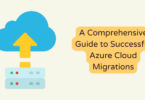
What are the levels of IT support?
Information technology undoubtedly is revolutionizing the world in many aspects. It has redesigned lots of businesses and areas of specialization. One of the most versatile areas where IT has made a strong stand is the web and customer service. Many people are usually curious about the IT support levels a particular firm employs in carrying out its services. Some are not aware of this hierarchy or what it entails. So, to offer a guide, we intend to present the various IT support levels out there.
As a start, IT support tiers are the various skills and capabilities that different IT organizations possess. These hierarchies are not vague or wrongly delineated; rather, you shall see in subsequent paragraphs that they are well designated and independent. Visit a firm like IT Support Elk Grove Village for access to all these levels. Usually, there are five support levels with distinct features. There might be some slight variation in some organization’s infrastructure, but the basic model is the same.
Level zero
This support level is the computer-enabled interaction level. Human experience or interaction is very limited at this level. Typically, the tasks performed at this level are similar to information retrieval or automated self-help service. You can go on the web or an application to get various details and instructions yourself at this level. You do not need to see staff or require human intervention. If you wish to get in touch with the firm, this support level enables you to do that through social media networks. Hence, you can receive lots of company info by interacting with both different pre-programmed apps and software.
This level also includes forums for clients to outsource their problems and get solutions from the same platform. The personnel you need to implement this level are people that can create web and mobile apps. You can also employ a moderator for forums and transfer if queries from this level to the next. In essence, you require some marketing and computer-based resources to get this done.
Level one
This level stands for a primitive service support stage. What you find in this stage are staff that possesses the most basic IT knowledge. Their function is things like receiving and replying to calls, emails, queries, and other issues. They can also use some basic algorithms to solve simple issues in some instances.
The objective of this level is restricted to providing solutions to the most basic problems. Also included is basic desk support and giving detailed information of the firm and its products. Any unsolved issue at this stage is pushed to the next. The type of staff you need at this stage are people with rudimentary technical knowledge. These people can also be trained to handle common issues and receive queries through standard scripts.
Level two
This level deals with offering more deep analysis and support from the company. Usually, the tasks performed by this level are those transferred from the previous level. Hence, you should expect more technical knowledge and analytical skills. At this level, the staff might not come in direct contact with the client as long as the problem is solved. Usually, you need people with in-depth computer skills to man this support level. They must also have a good background concerning the product in question. They should not necessarily be engineers, but a good grasp if solving technical issues is required.
Level three
This level contains experts in the product line. They are the backups for the topmost technical management crew. They must have access to the firm’s highest resource level to solve issues or develop novel designs. They do a thorough follow-up of the problem-solving crew. Another function and tactic employed by this support level are to recreate recurrent issues in a controlled environment and develop a sustainable solution. Once solved, they design a protocol to be followed by the previous levels in future recurrence. The staff at this level are specialists and possess the highest engineering or IT qualifications.
Level four
Typically, this is the last level on the ladder and consists of external resources that a firm consults for support and management. They are usually not part of the organization and offer services not offered by the parent company. For instance, commonly outsourced services include routine maintenance, software, and depot support. The staff needed for this service are mere partners that could provide the required services. The expertise required can not be limited to one area or field.






